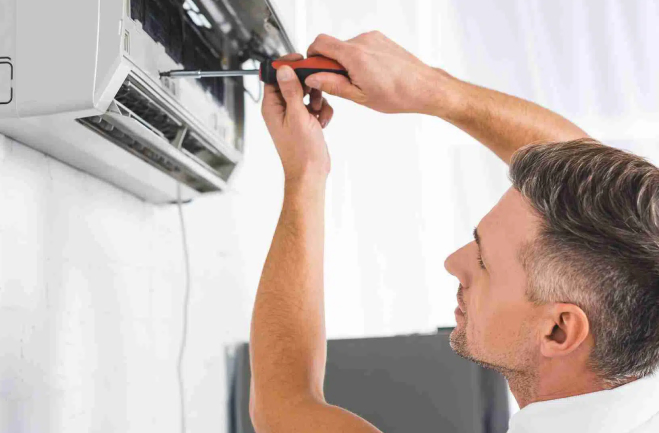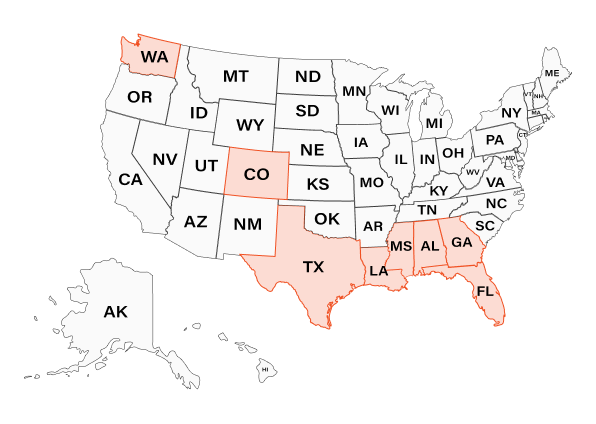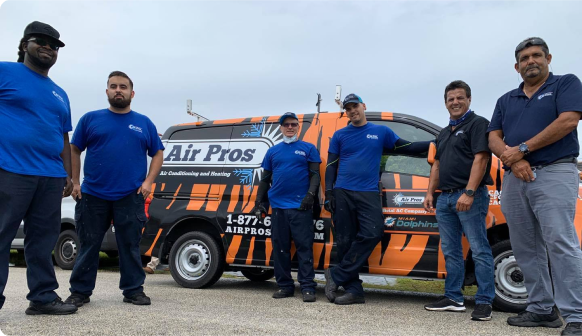Central Air
Conditioning Services
Our professionals will thoroughly evaluate your home and find the right system, model, and size. An efficient process lets us quickly install or replace your AC. If you need ventilation and/or electrical updates, we’ll ensure your home is up to code and all matters are addressed so your system runs reliably, safely, and efficiently.

AIR CONDITIONING SERVICES
Air Pros employs trained and certified AC technicians who can address customers’ installation, repair, and maintenance needs throughout the Tri-County area. Committed to ensuring the comfort of your home, our contractors are available 24/7 to fix your AC during the long summer months. Whether you require AC maintenance or a new system, they’re experienced and equipped to handle any task, from an AC tune up to a new AC install job. Call us whenever your air conditioner goes down or it’s time for service.
Cooling
AC Repair
We have all the equipment and tools to complete any type of residential AC repair in a single visit. Air Pros technicians are effective troubleshooters and will diagnose the problem right away. Whether your AC isn’t producing cold air, is making noise, or leaking, they can get to the bottom of it and restore your air conditioning system.
Faulty Circuit Boards
Dirty AC Condensers
Thermostat Replacement
Clogged or Dirty Filters
Capacitor Problems
AC Installations
Free AC Estimates
Skilled & Certified
Brands That Matter
High-Level Training
Speedy
Cooling
AC Installation
Our professionals will thoroughly evaluate your home and find the right system, model, and size. An efficient process lets us quickly install or replace your AC. If you need ventilation and/or electrical updates, we’ll ensure your home is up to code and all matters are addressed so your system runs reliably, safely, and efficiently.
About Our ac Services
SAME DAY SERVICE
UP TO $500 OFF NEW CENTRAL AIR CONDITIONER UNIT
AFFORDABLE PRICING
FAST, FRIENDLY AND POLITE!
WE BEAT ANY ADVERTISED PRICE
ASK ABOUT AC TUNE UP
NATE CERTIFIED SERVICE TECHS
PINKERTON APPROVED - VERIFIED CONTRACTOR
We Service All Brands! We Earn Our Stripes
Free diagnostics With Any Repair Made To Residential Central Air Conditioner Unit
Prevent Issues
Before They Start
Our service tech pros to your home twice a year to ensure a bulletproof air conditioning system that will save you thousands of dollars over the lifetime of your AC unit. The smartest way to avoid problems BEFORE they start.

Areas
We Serve
Areas We Serve

CENTRAL FLORIDA
SOUTH FLORIDA
CENTRAL FLORIDA
COLORADO
LOUISIANA
ALABAMA
Texas
WASHINGTON
SOUTH FLORIDA
GEORGIA
WEST FLORIDA
NORTHEAST FLORIDA
CURRENT SPECIALS
Limited Time Offer!
$25 Service Call
($119 value)
Fee waived with any AC Repair.
- Expires: 9/30/2025
System Tune-up
$79
(Avoid Breakdowns)
Limited Time Offer.
Can’t be combined with other offers.

- We’re proud to be one of America’s most trusted AC installation and HVAC repair and maintenance companies.
- Feel free to find your nearest location or continue browsing to learn about our services, specials, AC tips and tricks, and financing options.
- For help, schedule service online or call (754) 240-9449 today.


